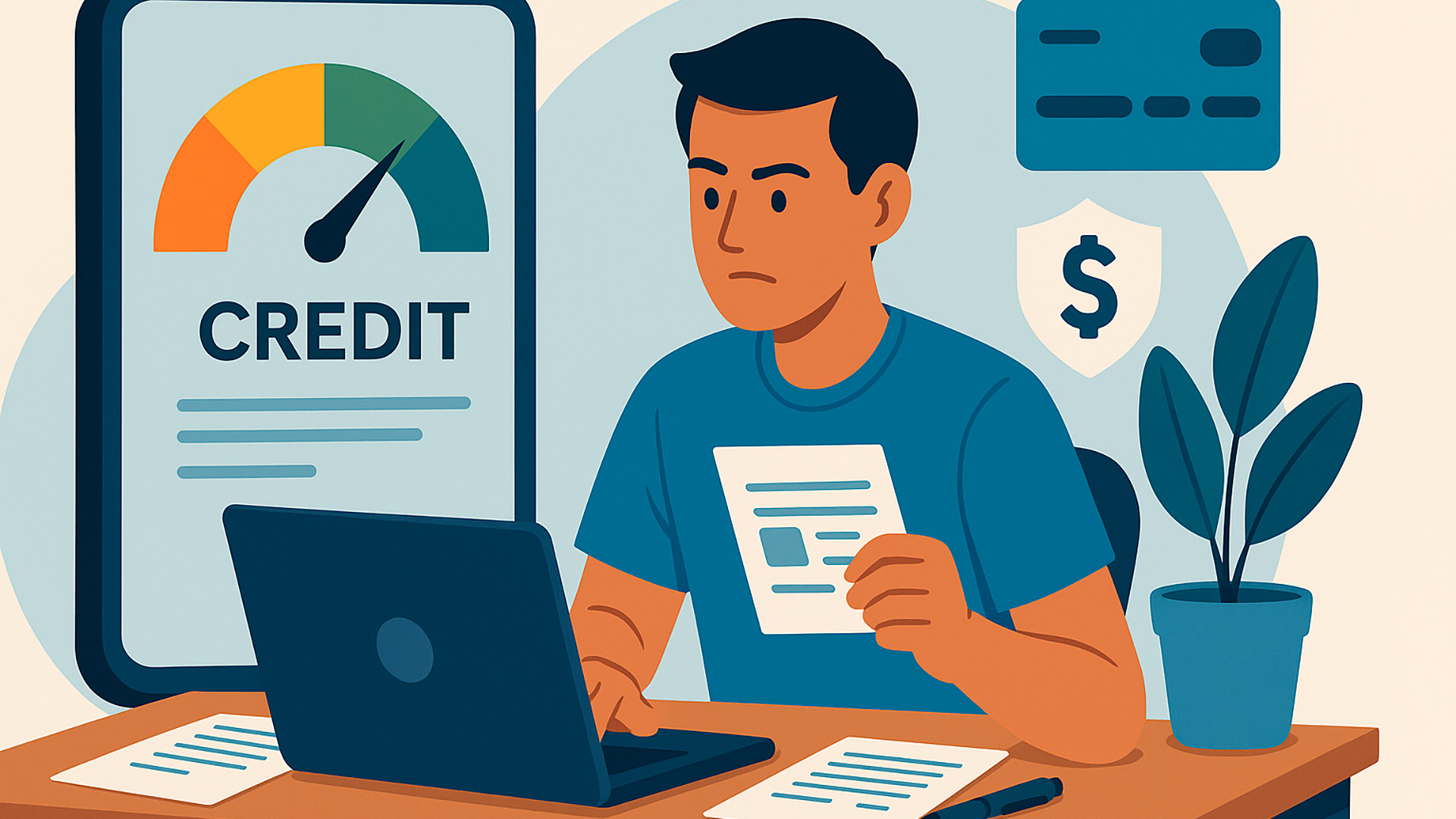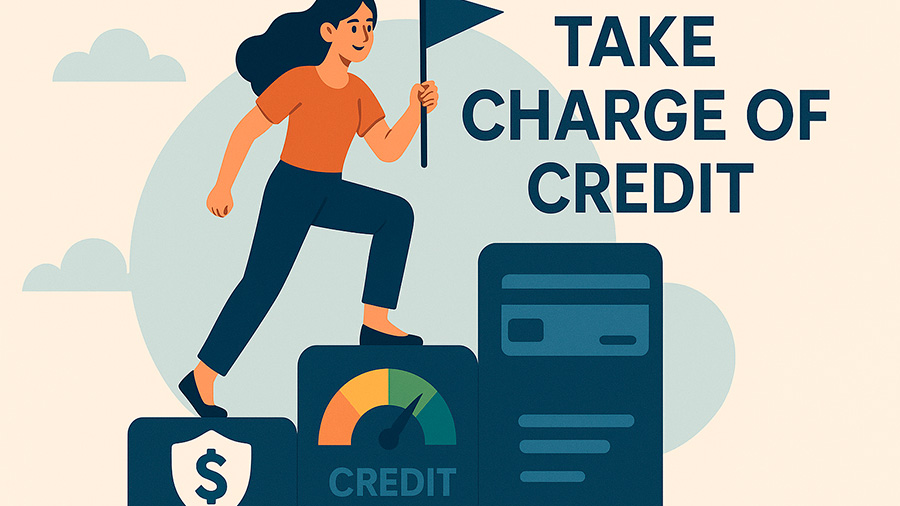
Credit touches nearly every part of modern life—from buying a car or renting an apartment to starting a business or getting a job. Yet for many people, it feels like something that happens to them, not something they can influence. The truth is the opposite: you have more power than you think. Learning to take charge of credit means transforming from a passive borrower into an active manager of your financial destiny. It involves understanding how credit systems work, using them to your advantage, and building habits that protect your financial health for years to come.
Why Control Matters
When you don’t manage credit proactively, it manages you. Late payments, high balances, or errors on a credit report can reduce your score and limit access to financial opportunities. A weak score can mean paying higher interest rates or being denied loans altogether. On the other hand, taking charge of your credit empowers you to borrow on your own terms, qualify for better rates, and navigate life’s financial challenges with confidence. Knowing how to take charge of credit is not about being perfect—it’s about being informed, consistent, and strategic.
Understanding How Credit Works
Credit is not just a score; it’s a system of trust. Lenders use it to evaluate the risk of lending you money. That trust is earned through your behavior—how you borrow, repay, and manage obligations. The major credit bureaus—Experian, Equifax, and TransUnion—collect data on every credit account you have and compile it into a report. Based on this, your credit score is calculated, usually on a scale from 300 to 850. The higher the score, the stronger your financial reputation. To truly take charge of credit, you must first understand what affects it and how to influence each factor.
Table: The Key Components of a Credit Score
| Factor | Weight in Score | How to Manage It |
|---|---|---|
| Payment History | 35% | Always pay bills on time |
| Credit Utilization | 30% | Keep balances below 30% of your limits |
| Length of Credit History | 15% | Keep older accounts open |
| Credit Mix | 10% | Use different types of credit responsibly |
| New Credit Inquiries | 10% | Avoid too many applications in short timeframes |
Taking the First Steps Toward Control
The first step in learning to take charge of credit is awareness. You can’t control what you don’t understand. Start by reviewing your credit report from each bureau. You’re entitled to one free report per year from AnnualCreditReport.com. Look for errors—duplicate accounts, incorrect late payments, or outdated information. Even small inaccuracies can drag down your score. Disputing these errors can lead to quick improvements and a clearer picture of your financial standing.
Once you know where you stand, build a plan for improvement. Paying down debt, creating a budget, and setting up automatic payments help stabilize your credit history. The goal is not perfection but consistency. Credit scores reward regular, predictable behavior over time. Every on-time payment and reduced balance moves you closer to financial independence.
Common Mistakes That Undermine Control
Even well-intentioned borrowers make errors that slow their progress. Recognizing and avoiding these pitfalls is key to long-term success:
- Ignoring bills or statements: Out of sight doesn’t mean out of impact—missed payments can stay on your record for years.
- Closing old accounts too soon: This shortens your credit history and can hurt your score.
- Applying for too many loans: Each hard inquiry slightly lowers your score, especially if done frequently.
- Relying solely on credit cards: Lenders prefer to see a mix of credit types, like installment loans and revolving accounts.
- Neglecting to monitor your credit: Without regular checks, identity theft or reporting errors can go unnoticed.
Small changes—such as setting reminders, automating payments, and tracking progress—create big results over time. These habits are how you consistently take charge of credit instead of letting it control you.

Real-Life Example: Rebuilding Confidence Through Action
Consider James, a freelance designer who lost clients during the pandemic. With inconsistent income, he fell behind on credit card payments, and his score dropped from 720 to 580. Instead of giving up, he took a structured approach to recovery. He called creditors to negotiate lower payments, set up autopay for all future bills, and used a secured credit card to rebuild his history. Within 18 months, his score rose to 690. By learning to take charge of credit, James not only repaired his score but also gained a sense of control over his finances that he never had before.
Using Credit Responsibly to Your Advantage
Credit is often viewed as risky, but in reality, it’s a tool. When used wisely, it provides flexibility, security, and leverage. Responsible use means keeping balances low, borrowing only what you can repay, and making payments on time. For example, using a credit card for monthly bills and paying the balance in full builds credit without accumulating interest. Similarly, taking out a small personal loan and paying it back early can strengthen your profile. To take charge of credit, shift your mindset from avoiding debt to managing it strategically.
Table: Smart vs. Risky Credit Behaviors
| Smart Behavior | Outcome | Risky Behavior |
|---|---|---|
| Paying more than the minimum each month | Reduces debt faster, lowers interest costs | Making only minimum payments |
| Checking credit reports regularly | Spots errors and prevents fraud | Ignoring credit data |
| Keeping utilization under 30% | Improves score stability | Maxing out credit cards |
| Mixing loan types | Shows versatility to lenders | Relying on one credit source |
| Planning large purchases ahead | Prevents impulsive debt | Borrowing without strategy |
The Role of Credit Agencies and Lenders
Credit agencies are not your enemies—they are record-keepers. Understanding how they work helps you maintain a positive relationship with the system. Reporting agencies don’t judge, but they do record. It’s up to you to provide them with positive data. Paying on time, keeping old accounts active, and avoiding high balances all ensure that the record they create reflects stability. Lenders, in turn, rely on this information to decide terms and rates. When you consistently show responsibility, lenders begin to view you as a low-risk borrower, making it easier to access loans, mortgages, or even business funding. This is how professionals and families alike take charge of credit to build better futures.
Financial Tools That Support Credit Management
Technology has made managing credit easier than ever. Budgeting apps, online banking, and credit monitoring tools allow you to stay informed in real time. Services like Credit Karma, Experian Boost, or Mint help you track scores, pay bills, and identify trends. Some even report rent and utility payments, helping individuals with limited credit history establish a stronger profile. By embracing these resources, you actively participate in your financial story rather than reacting to it. The more data you control, the easier it becomes to take charge of credit effectively.
Example: From Financial Confusion to Confidence
Maria, a teacher in Texas, always felt intimidated by money management. After missing a few payments and maxing out a credit card, her score dipped into the low 600s. She began using a budgeting app to track spending, set alerts for due dates, and enrolled in a credit-building loan through her local credit union. Within a year, her score improved by nearly 100 points. Today, she feels in control and uses her credit strategically, paying off balances monthly. Her experience highlights that anyone, regardless of income or background, can take charge of credit with the right approach.
Long-Term Habits for Lifelong Control
Credit management is a lifelong process, not a one-time fix. Once you’ve established good habits, the challenge becomes maintaining them. Here are long-term strategies that ensure your financial stability continues to grow:
- Review reports annually: Accuracy is key—errors can reappear over time.
- Plan for major expenses: Avoid borrowing in emergencies by building an emergency fund.
- Limit new credit lines: Only apply when necessary to maintain a clean record.
- Reassess goals regularly: Financial needs evolve; your credit strategy should too.
- Protect your identity: Use fraud alerts and strong passwords to prevent unauthorized activity.
These steps ensure you not only take charge of credit today but keep that control firmly in your hands tomorrow.
Empowerment Through Knowledge
Credit is often viewed as intimidating, but once you understand it, it becomes empowering. The ability to take charge of credit comes from knowledge—knowing your reports, your habits, and your goals. By maintaining discipline, using available tools, and learning from real examples, anyone can transform their financial outlook. The process takes time, but every positive action—every payment, every lowered balance—tells lenders and yourself the same story: you are in control. And in today’s economy, control is the foundation of true financial freedom.
